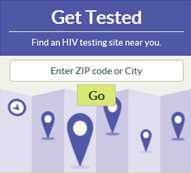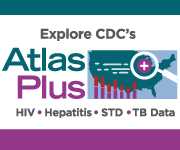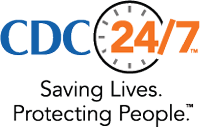Medicaid Opportunities
What is Medicaid Expansion?
Medicaid expansion is the extension of Medicaid eligibility to non-elderly individuals with annual incomes below 133 percent of the federal poverty level ($15,880 for an individual or $32,319 for a family of 4 in 2016) who are under 65 years of age. 1,2
In June 2012 the Supreme Court ruled to make Medicaid expansion voluntary for states. Most, but not all, states have expanded their Medicaid program.
What is new as of 2014?

Millions of low-income individuals were newly eligible for Medicaid coverage.
Individuals and families can use the Health Insurance Marketplace throughout the year to apply for and determine their eligibility for coverage through Medicaid or CHIP in one simple process. If the eligibility criteria are met, they will be directed to the Medicaid and/or CHIP enrollment process. 3
Enrollees eligible under Medicaid expansion receive a package that includes the “essential health benefits,” a minimum set of services and items that includes preventive and wellness services, and the preventive services covered without cost-sharing. 4,5
- Information on Essential Health Benefits (EHB) Benchmark Plans – Centers for Medicare & Medicaid Services
- HIV/AIDS, Viral Hepatitis, STD, and TB Preventive Services Covered Without Cost-Sharing
What are the implications of Medicaid Expansion for Prevention Programs?
More individuals at risk for HIV, viral hepatitis, STDs, and TB may be eligible for Medicaid or private insurance.
Populations at risk for HIV, viral hepatitis, STDs, and TB are disproportionately low-income and, therefore, likely to be newly eligible for Medicaid or Marketplace coverage. 6 This is particularly true for low-income males since single, childless males are less likely to meet the traditional Medicaid eligibility criteria. 7
Health department engagement with private primary care providers is increasingly important.
Private primary care providers have more opportunities to deliver preventive services to newly eligible Medicaid and Marketplace enrollees. However, providers may have limited experience serving individuals at risk for or with HIV/AIDS, viral hepatitis, STDs, and TB; providers may also be unaware of community or public health services that are available.
Medicaid data may become more useful to health departments.
With Medicaid coverage being extended to more people with HIV/AIDS, viral hepatitis, STDs, and TB and with the increase in use of electronic medical records by providers, Medicaid service data may prove to be increasingly useful for public health activities.
Health departments may have additional opportunities for being reimbursed by Medicaid for direct services they provide to enrollees.
How might health departments respond?
1) Become familiar with the Medicaid program in your state.
Determine if your state has opted to extend Medicaid eligibility to low-income adults.
- Is my state expanding Medicaid coverage?
- Status of State Action on the Medicaid Expansion Decision | The Henry J. Kaiser Family Foundation
Be aware of your Medicaid agency’s regulations, processes, and requirements with regard to the eligibility, enrollment, and care of persons at risk for or with HIV/AIDS, viral hepatitis, STDs, and/or TB.
- Medicaid Enrollment by State (overview of state Medicaid programs)
- Medicaid Waivers (states use waivers to test new or existing ways to deliver and pay for health care services in Medicaid and the CHIP)
- Medicaid and HIV/AIDS
Identify the critical services for HIV/AIDS, viral hepatitis, STD, and TB prevention that Medicaid covers in your state. Identify service delivery requirements, cost-sharing, and provider reimbursement rates.
- Medicaid Benefits
- Medicaid: Affordable Care Act: Benefits
- Coverage of Preventive Services for Adults in Medicaid | The Henry J. Kaiser Family Foundation
- Early and Periodic Screening, Diagnostic, and Treatment (EPSDT)
- HIV/AIDS, Viral Hepatitis, STD, and TB Preventive Services Covered Without Cost-Sharing
- State Medicaid Coverage of Routine HIV Screening
Note: Programs in states that are implementing “alternative” approaches to Medicaid expansion (i.e. expanding Medicaid through “premium assistance”) should be mindful of state decisions regarding coverage and cost-sharing of relevant preventive services for newly eligible Medicaid enrollees.
2) Explore opportunities to work with Medicaid to establish and achieve population health objectives.
Engage state Medicaid agencies in discussions concerning mutual goals and objectives with regard to enrollment, education, and health outcomes relevant to your programs.
As part of the effort to improve health outcomes, CMS is helping states undertake efforts to expand access to preventive health care by providing technical assistance and facilitating the exchange of information about promising practices of high quality, high impact, and effective preventive care delivery. Visit Prevention | Medicaid.gov for additional information.
Examples
HIV: The newly formed CMS HIV Health Improvement Affinity Group that supports state collaborations between public health and Medicaid programs to improve rates of sustained virologic suppression among Medicaid and CHIP enrollees who are living with HIV.
Hepatitis: Letter from CMS to Medicaid Directors, addressing Assuring Medicaid beneficiaries access to Hepatitis C Drugs.
Furthermore, Medicaid may support community prevention services.
Rule change in 2014 allows state Medicaid programs to reimburse for interventions that use nontraditional providers (such as community health workers) in a nonclinical setting, as long as the service was recommended by a physician or other licensed practitioner. 8
Requires submission of State Plan Amendment (SPA) to Medicaid requesting approval for such reimbursement.
Use of such services for asthma prevention was anticipated and recently approved for Missouri.
References
1 Patient Protection and Affordable Care Act, Pub. L. No. 111-148, §2001, 124 Stat. 171 (2010), amending Section 1902(a)(10)(A)(i)(IX) of the Social Security Act, 42 U.S.C. 1396a.
2 Poverty Guidelines 2016. Office of Assistant Secretary for Planning and Evaluation.
3 Coordination with Affordable Insurance Exchanges. Centers for Medicare & Medicaid Services.
4 Patient Protection and Affordable Care Act, Pub. L. No. 111-148, §2001(c), 124 Stat. 276 (2010), 42 U.S.C. 1396u-7(b)(5).
5 Patient Protection and Affordable Care Act, Pub. L. No. 111-148, §4106(a), 124 Stat. 559 (2010), amending Section 1905(a)(13) of the Social Security Act, 42 U.S.C. 1396d(a)(13).
6 Establishing a Holistic Framework to Reduce Inequities in HIV, Viral Hepatitis, STDs, and Tuberculosis in the United States. U.S. Department of Health and Human Services, Centers for Disease Control and Prevention; October 2010.
7 Medicaid’s Role for Women. Issue Brief Across the Lifespan: Current Issues and the Impact of the Affordable Care Act. Henry J. Kaiser Family Foundation, 2012.
8 Update on Preventive Services Initiatives CMCS Informational Bulletin, November 27, 2013.
- Page last reviewed: December 23, 2016
- Page last updated: June 13, 2017
- Content source:


 ShareCompartir
ShareCompartir


